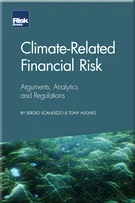Cutting through the hype: how CECL is impacting investor views of procyclicality, credit analysis and M&A
Saul Martinez and Catherine Mealor
Introduction
An overview of CECL: setting the context
Outlining the most impactful assumptions and challenges under CECL: an auditor’s view
Outlining the most impactful assumptions and challenges under CECL: a banker’s view
A banking industry perspective on key CECL decisions
Challenges and solutions for wholesale portfolios
Challenges and solutions for retail mortgage portfolios
Challenges and solutions for retail credit card portfolios
Challenges and solutions for student loans
Challenges and solutions for securities portfolios
The evolution of purchased loan accounting: from FAS 91 to the CECL transition
Challenges and solutions for qualitative allowance
Challenges and solutions: an auditor’s point of view
Early view of CECL integration into stress testing: practical approaches
Too many cooks in the kitchen: mastering the art of managing CECL volatility
Beyond CECL: rethinking bank transformation
Data collision: efficient lending under CECL
Cutting through the hype: how CECL is impacting investor views of procyclicality, credit analysis and M&A
Concentration risk: the CECL magnifying glass
Closing thoughts
Concerns about procyclicality and earnings volatility dominated discussions about CECL with investors before its implementation on January 1, 2020. Since then, these conversations have evolved, with dialogue becoming focused on how CECL will impact this economic cycle, and how to analyse and forecast credit risk and trends under the accounting standard. This chapter will therefore examine the following six questions that investors most frequently ask us.
-
Will CECL allow banks to be better reserved at the start of a cycle?
-
When to invest: peak provisions or peak losses?
-
How quickly will the CECL model allow for reserve releases, and how will the market react?
-
How will investors analyse core profitability under CECL?
-
How can investors effectively compare reserves between banks under CECL?
-
How has CECL impacted the way investors analyse mergers and acquisitions (M&A) activity?
TOPIC 1: WILL CECL ALLOW BANKS TO BE BETTER RESERVED AT THE START OF A CYCLE?
The delayed recognition and procyclicality of the incurred loss model was one of its biggest flaws. One of the primary motivations for CECL was to create a reserving methodology that allows
Copyright Infopro Digital Limited. All rights reserved.
As outlined in our terms and conditions, https://www.infopro-digital.com/terms-and-conditions/subscriptions/ (point 2.4), printing is limited to a single copy.
If you would like to purchase additional rights please email info@risk.net
Copyright Infopro Digital Limited. All rights reserved.
You may share this content using our article tools. As outlined in our terms and conditions, https://www.infopro-digital.com/terms-and-conditions/subscriptions/ (clause 2.4), an Authorised User may only make one copy of the materials for their own personal use. You must also comply with the restrictions in clause 2.5.
If you would like to purchase additional rights please email info@risk.net










